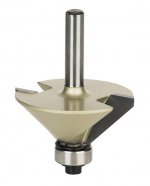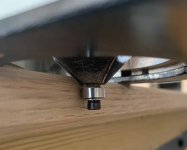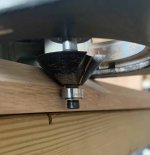Hello FOG and newbie alert. I hope this is the appropriate place to post this. If it isn’t, apologies in advance.
I recently inherited a DF500 in very good condition and this kind of reignited a very basic skill woodworking bug that has been dormant for a few years because of life. Now that I have a bit more time, I've managed to complete a couple of things for family that are pretty decent and with some actual straight lines. Slowly I've replaced old and tired tools with better ones and after playing around with the DF500, I am a Festool convert with an AGC18, TS55, CT15 (wife calming device) and an ETS EC 150. Now I'm toying with the idea of getting a router but am somewhat unsure what's the best option to consider. I was looking at the OF1010 or the MFK700.
Honestly, all I intend to use it for is the following:
1. cutting slots to fit supports in
2. bevelling edges
3. cutting chamfers on edges
I am pretty sure the 1010 would do this but the truth is, I have no idea what copying ring works best with 1/4" bits and if I need a different base plate to run the router along the edge of a table or edge of a surface to cut a bevel or chamfer.
Like I said, newbie with limited knowledge but big dreams so please excuse me if these questions are overly basic.
Any help would be greatly appreciated and advice would be eagerly accepted.
Thank you!
I recently inherited a DF500 in very good condition and this kind of reignited a very basic skill woodworking bug that has been dormant for a few years because of life. Now that I have a bit more time, I've managed to complete a couple of things for family that are pretty decent and with some actual straight lines. Slowly I've replaced old and tired tools with better ones and after playing around with the DF500, I am a Festool convert with an AGC18, TS55, CT15 (wife calming device) and an ETS EC 150. Now I'm toying with the idea of getting a router but am somewhat unsure what's the best option to consider. I was looking at the OF1010 or the MFK700.
Honestly, all I intend to use it for is the following:
1. cutting slots to fit supports in
2. bevelling edges
3. cutting chamfers on edges
I am pretty sure the 1010 would do this but the truth is, I have no idea what copying ring works best with 1/4" bits and if I need a different base plate to run the router along the edge of a table or edge of a surface to cut a bevel or chamfer.
Like I said, newbie with limited knowledge but big dreams so please excuse me if these questions are overly basic.
Any help would be greatly appreciated and advice would be eagerly accepted.
Thank you!



